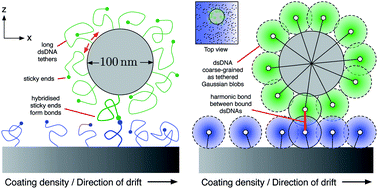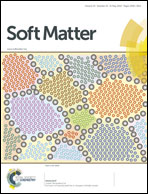Designing stimulus-sensitive colloidal walkers†
Abstract
Colloidal particles with DNA “legs” that can bind reversibly to receptors on a surface can be made to ‘walk’ if there is a gradient in receptor concentration. We use a combination of theory and Monte Carlo simulations to explore how controllable parameters, e.g. coating density and binding strength, affect the dynamics of such colloids. We find that competition between thermodynamic and kinetic trends imply that there is an optimal value for both the binding strength and the number of “legs” for which transport is the fastest. Using available thermodynamic data on DNA binding, we indicate how directionally reversible, temperature-controlled transport of colloidal walkers can be achieved. In particular, the present results should make it possible to design a chromatographic technique that can be used to separate colloids with different DNA functionalizations.


 Please wait while we load your content...
Please wait while we load your content...